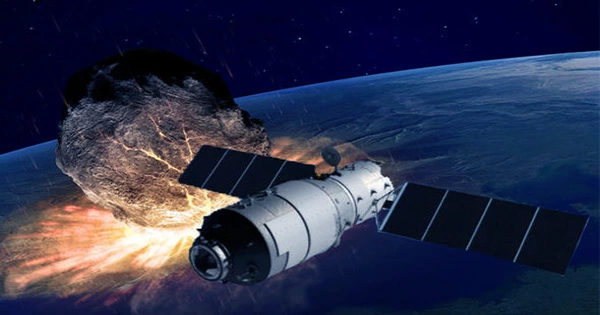The European Space Agency (ESA) will launch PLAnetary Transits and Oscillations of Stars (PLATO), its newest exoplanet-hunting mission, in 2026.
In order to search for potential Earth-like planets around Solar analogs, this mission will scan roughly 245,000 main-sequence F, G, and K-type (yellow-white, yellow, and orange) stars using the Transit Method.
These planets are thought to be excellent prospects for habitability because they are most likely to have all the conditions that led to life on Earth. This is known as the “low-hanging fruit” approach (also known as follow the water).
For PLATO to decide how and where to focus its observation time, it is crucial to know how many planets it will likely find and how many will resemble Earth.
According to a new study that will be published in the journal Astronomy & Astrophysics, the PLATO mission is likely to find tens of thousands of planets. Depending on several parameters, they further indicate that it could detect a minimum of 500 Earth-sized planets, about a dozen of which will have favorable orbits around G-type (sun-like) stars.
Researchers from the Institute of Planetary Research (IFP) and Institute of Optical Sensor Systems at the German Aerospace Center (DLR), the Department of Geological Sciences at the Freie Universität Berlin (FU Berlin), and the Center conducted the study for Astronomy and Astrophysics at the Technical University Berlin (TUB). The study details can be found on the pre-print server, arXiv.
Filip Matuszewski, a Ph.D. candidate with the Grenoble Planetary and Astrophysics Institute (IPAG) at the Université Grenoble Alpes, led the study as part of his thesis while studying at FU Berlin and the Extrasolar Planets and Atmospheres.
To assess the number of exoplanets PLATO could detect, Matuszewski and his team developed a tool named the Planet Yield for PLATO Estimator (PYPE). In this tool, planet formation models’ occurrence rates are combined with data from the Kepler space telescope and statistical methods.
As a result, they were able to make an educated guess as to how many exoplanets PLATO will discover over the course of four years using only a portion of the observation fields chosen for the all-sky PLATO stellar input catalog (PIC).
Using the most conservative planet population model and mission scenario, we estimate a minimum of 500 Earth-sized planets to be detected in the nominal mission duration of four years. That includes every type of star and every distance to the star. If we look at Earth-sized planets with an orbital period range of 250-500 days around G stars (Earth-Sun analogs), we estimate up to 12 detections. This is for the 2+2 year observation with the most optimistic planet model.
Filip Matuszewski
As Matuszewski explained to Universe Today via email:
“First, we needed a synthetic population of planets (our own little universe, if you will). To do this, we took a planetary population model, which is basically a simulation of 1000 protoplanetary disks evolving into planetary systems (Christoph Mordasini of the University of Bern, Switzerland, provided us with these planetary systems). Since the resulting systems are quite different from what we currently know about exoplanets, we wanted to include data from Kepler. Based on the occurrence rates from Kepler, we formed our own two-planet populations to use as a comparison.”
The second step, said Matuszewski, consisted of the team estimating how many stars PLATO will observe in just one field of view (~125,000) and assigning a planetary system (based on our own) to each.
Next, they considered how many of these planets would have the proper orientation to make transits relative to PLATO (is it edge-on to the telescope?), thus producing a visible dip in brightness. For a plant orbiting a star the same size as our sun with an orbital period of 365 days, the probability of this happening (aka. transit probability) is just 0.47%.
The amount of stars that PLATO will observe, however, still leaves tens of thousands of candidates for investigation. In order to determine if the transit signal would be greater than the background noise, they lastly used a detection efficiency model that takes into account the performance of PLATO’s cameras and various noise sources.
“That is the basic function of PYPE,” said Matuszewski. “From there, we can tweak the program to give us results for various false scenarios and time periods. How many planets do we find looking here for two years and there for two years? What if we look at a particular field for longer?”
When they applied the PYPE to the observatory’s four-year primary mission, the team obtained some very encouraging results. They discovered that PLATO is likely to find hundreds or tens of thousands of exoplanets, depending on what areas it observes and for how long, the orbital period of the planets, their orientation, and other criteria.
Even more encouraging, they found that a statistically significant number of these planets are likely to be similar to Earth. As Matuszewski explained, “Using the most conservative planet population model and mission scenario, we estimate a minimum of 500 Earth-sized planets to be detected in the nominal mission duration of four years.”
“That includes every type of star and every distance to the star. If we look at Earth-sized planets with an orbital period range of 250-500 days around G stars (Earth-Sun analogs), we estimate up to 12 detections. This is for the 2+2 year observation with the most optimistic planet model.”
In the past 20 years, the number of known exoplanets has grown exponentially, with 5,483 confirmed detections in 4,087 systems (and another 9,770 candidates awaiting confirmation) as of July 30th, 2023. The discovery and characterization of these exoplanets have informed (and challenged) prevailing theories about planet formation and occurrence rates.
However, there remain some unanswered questions and a significant margin of uncertainty regarding how common certain types of planets are (related to gaps in the exoplanet census).
This study’s and similar ones’ goal is to create estimates that can be compared to observational data. Scientists will be better able to understand how common exoplanets are accounting for size, mass, composition, orbital period, etc. by understanding how the results differ from the estimates and planet formation models.
Results from PLATO will indicate how widespread Earth-like planets orbiting G-type solar analogs are, in particular, which will assist focus the search for planets that are probably livable and inhabited.
















